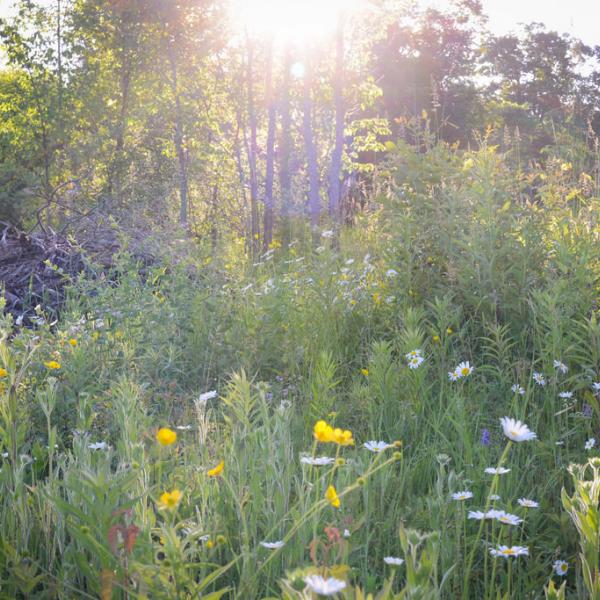
Vermonters know that our hot and humid summer weather has really settled in once our fields and roadsides start popping out in colorful blooms of chicory, Queen Anne’s lace, black-eyed Susan, orange hawkweed, and feral daylilies. It’s a beautiful time of year in our state, and it’s also a time of year when our songbirds start fattening up for their winter migration and our native pollinators begin to collect and store pollen and nectar for their young to feed on over the winter.
This is the time of year that wild parsnip, commonly referred to as poison parsnip, starts to bloom in fields and along roadsides. And it presents landowners with a tricky decision, especially those who are trying to provide grassland bird and pollinator habitat by allowing their fields and meadows to grow without mowing them. Wild parsnip, if left untreated, can become well-established along field edges and in disturbed areas and can eventually spread into adjacent areas to form dense stands in high-quality fields and meadows.
Wild parsnip (Pastinaca sativa) is an invasive plant, native to Europe and Asia. It can outcompete native, more pollinator-friendly plants and can impact both native pollinators and the birds that feed on them. Additionally, wild parsnip contains a phototoxic sap that can cause burns, blistering, and skin discoloration when exposed to sunlight.
If wild parsnip is found before the infestation gets too large, landowners can dig out the individual plants and dispose of them properly. However, if the infestation has already become well-established and covers a large area, digging the plants out by hand is not very effective or efficient. The best way to control larger parsnip populations is to continually mow the plants before they flower and produce seed. This mowing needs to happen several times during the summer for 3-5 years. Unfortunately, doing this can eliminate habitat for grassland birds and pollinators for a few years while the continual mowing occurs. However, this is the best hope to restore field and other areas into a place where birds, pollinators, and beautiful wildflowers can thrive over the long run.
Landowners who are interested in more information on how to effectively treat wild parsnip can learn more here. For information on funding available to help landowners create quality habitat for grassland birds and pollinators, or for general technical assistance, contact Andrea Shortsleeve, Vermont Fish and Wildlife at andrea.shortsleeve@vermont.gov.
Caution: This plant contains a phototoxic sap that can cause burns, blistering, and skin discoloration. Please read the alert from the Vermont Department of Health before managing for this plant.
Written by Andrea Shortsleeve, Vermont Fish & Wildlife
Photo Credit: Tom Rogers